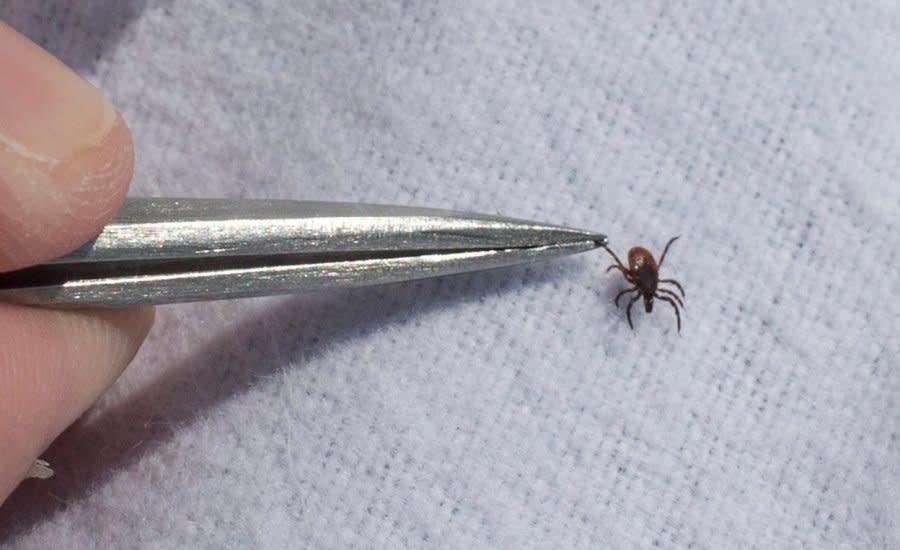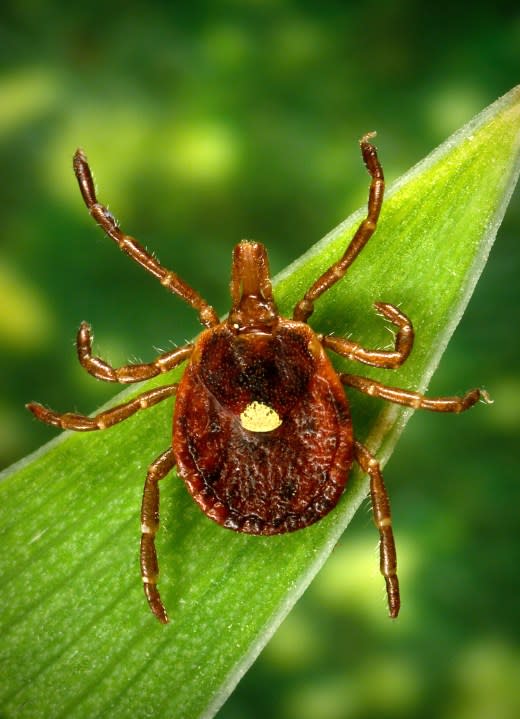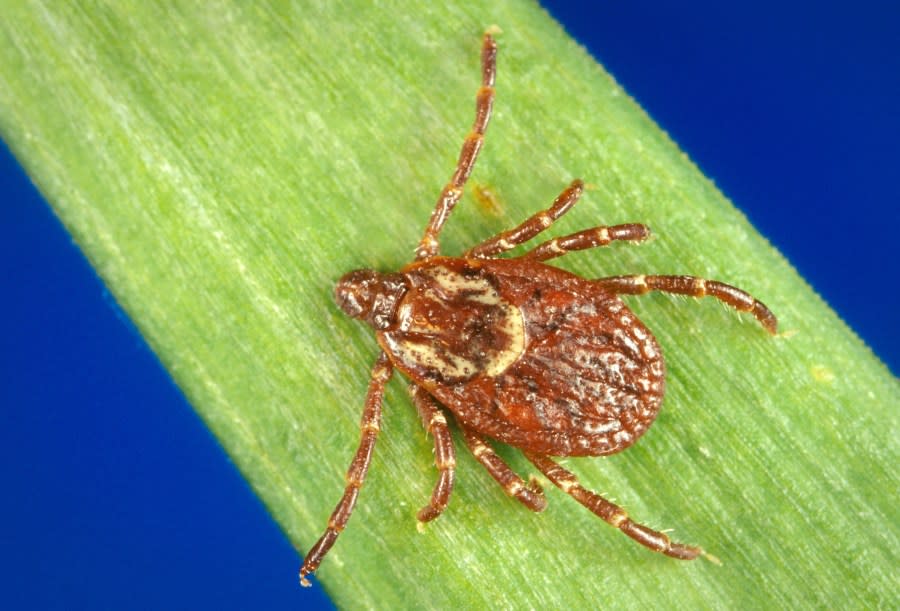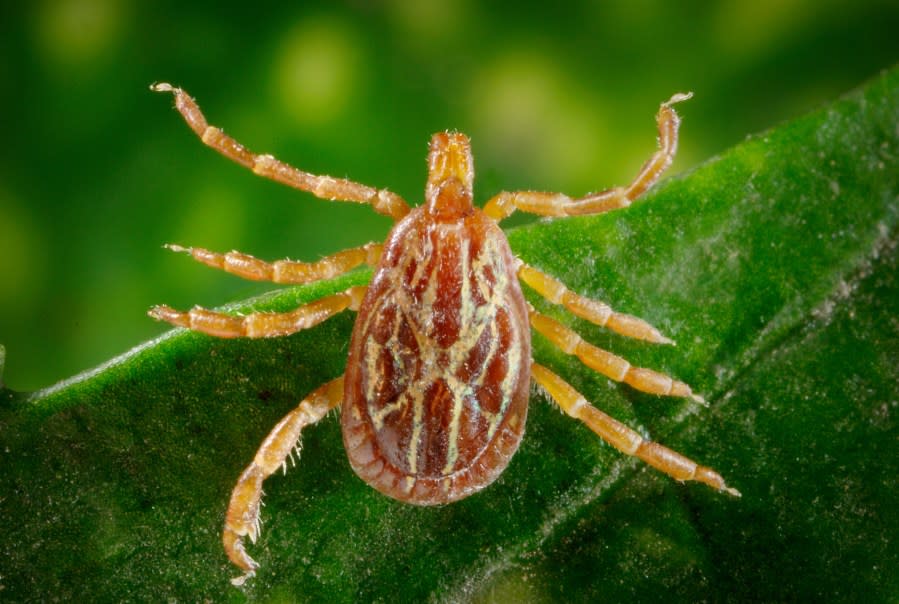Kansas ticks spread deadly diseases, KDHE post warning

TOPEKA (KSNT) – Parasites with a taste for human blood are coming out in force as temperatures warm in Kansas, bringing with them opportunities to spread harmful diseases.
The Kansas Department of Health and Environment (KDHE) took to social media on May 2 to warn people of the potential dangers that come from tick bites. These insects have the potential to spread one of several diseases in people they latch onto. Four of these are being highlighted by the KDHE in 2024 before people head outdoors this summer.
Kansans are at the greatest risk of contracting one of these diseases during spring, summer and fall when ticks are most active. While insect repellents can be used to deter ticks from latching on, these are not always effective. People can check themselves and pets after venturing outside for ticks using these helpful tips from the Centers for Disease Control and Prevention (CDC).
Anaplasmosis
This disease, like other tick-borne diseases, is spread through the bite of an infected blacklegged tick, according to the KDHE. The tick must be attached for a minimum of 12-24 hours for the bacterium that causes anaplasmosis to spread to the host. Symptoms of the disease include:
Fever and/or chills
Severe headache
Muscle aches
Nausea/vomiting
Diarrhea
Loss of appetite
Kansas veterinarian infected with ‘rose gardener’s disease’ after cat scratch

The incubation period for anaplasmosis is typically between five and 14 days. In rare instances, this disease can cause severe illness if treatment is delayed or other medical conditions are present.
In the most severe cases, anaplasmosis can cause respiratory failure, bleeding issues, organ failure and death. You can learn more about anaplasmosis by clicking here.
Lyme Disease
Signs and symptoms of Lyme disease become apparent anywhere between the third day after being bitten by an infected blacklegged tick all the way up to the 30-day marker. Symptoms can vary wildly depending on the stage of infection.
Early signs of infection (3-30 days after bite)
Fever and/or chills
Headache
Fatigue
Muscle and joint aches
Swollen lymph nodes
Later illness (Days or months after bite)
Severe headache and neck stiffness
Rashes on the body
Facial palsy
Arthritis with severe joint pain and swelling around knees and other large joints
Intermitten pain in tendons, muscles, joints and bones
Heart palpitations
Episodes of dizziness or shortness of breath
Inflammation of the brain and spinal cord
Nerve pain
Shooting pains, numbness or tingling in the hands or feet
Problem pests target Kansas farm crops
Most cases of Lyme disease are confirmed in June and July each year, according to the KDHE. You can learn more about this disease by clicking here.
Ehrlichiosis

People are infected with this disease through the bite of a lone star tick. These must be attached for at least a day for the disease to spread to the host.
Ehrlichiosis has an incubation period of five to 14 days with symptoms varying depending on what stage of infection the host is at. These include:
Early illness
Fever and/or chills
Severe headache
Muscle aches
Nausea/vomiting
Diarrhea
Loss of appetite
Rashes
Late illness
Damage to brain or nervous system
Respiratory failure
Uncontrolled bleeding
Organ failure
Death
People who are very young or very old are at higher risk of suffering from this disease, according to the KDHE. Those who have a weakened immune system are likely to develop a severe illness from Ehrlichiosis. Learn more about the disease by clicking here.
Spotted Fever Rickettsioses
Spread by the American dog tick and Gulf Coast tick, this group of diseases can bring a host of health issues to people who become infected. Rocky Mountain spotted fever (RMSF), the most serious instance of spotted fever rickettsiosis, are often spread by the American dog tick immediately after they bite.
Foreclosure threat looms over Heartland Motorsports Park
RMSF can be fatal for those infected with it in a matter of days following the bite of an infected tick, according to the KDHE. The incubation period for this disease is between three to 12 days. People should seek immediate treatment upon the first sign of symptoms.
Early illness
High fever
Severe headache
Nausea, vomiting
Abdominal pain
Muscle pain
Lack of appetite
Rashes
Later illness
Severe rashes
Altered mental status, coma and swelling of the brain
Respiratory compromise
Necrosis, often requiring amputation
Multiorgan system damage
Death
Those at the highest risk of severe illness are children below the age of 10 and people with glucose-6-dehydrogenase (G6PD) deficiency. You can learn more about this disease by clicking here.
Photo of an American dog tick. (Photo by Smith Collection/Gado/Getty Images). Photo of a Gulf Coast tick. (Photo by Smith Collection/Gado/Getty Images)
Biden sends Kansas $28 million for replacement of lead pipes
For more Kansas news, click here. Keep up with the latest breaking news in northeast Kansas by downloading our mobile app and by signing up for our news email alerts. Sign up for our Storm Track Weather app by clicking here.
Follow Matthew Self on X (Twitter): https://twitter.com/MatthewLeoSelf
For the latest news, weather, sports, and streaming video, head to KSNT 27 News.



